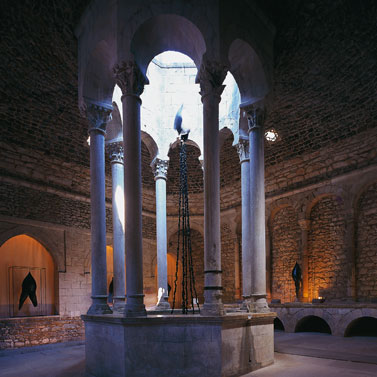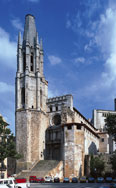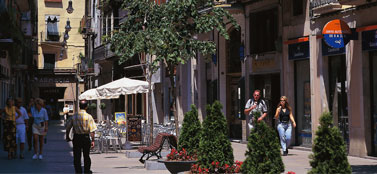- Villa search

- Canaries
- Caribbean
- Croatia, Bulgaria and Hungary
- Cyprus
- Florida
- France and Corsica
- Greece
- Italy
- Lakes and Mountains
- Madeira
- Malta and Gozo
- Portugal
- South Africa
- Spain - Balearics

The Arab Baths

Sant Felin
Later, in the new town I visit a restaurant that has dared to be different. El Celler de Can Roca may not be much to look at – a simple home converted into a couple of dining rooms – but the two brothers who own and run it have introduced innovatory and unforgettable Catalan dishes.
After finding me a table, brother Josep (in Catalonia, there’s no ‘h’ in Joseph) tells me the greatest obstacle to his new ideas came from his parents who own a chicken and chips restaurant next door.
“I grew up with the smell of grilling chickens as I sat doing my homework on the kitchen table,” he says. “I grew to hate the smell. After returning from catering school, I tried to influence them. Of course, they wouldn’t listen so my brother and I converted our old family home next door into a restaurant of our own.”
I plump for the 45 euro (£30) Menu Degustació, justifying my choice with the knowledge that something comparably good back home would cost two or three times as much. The plates are endless and include such delightful idiosyncratic mixes as potato and black pudding crepe, suckling pig with oranges and cloves, and pig's trotters with red mullet.
Next day
The next morning I’m ready to continue my journey through Girona’s two millennia of history. First I visit the Arab Baths – that aren’t Arabic at all but Romanesque – and skirt gardens named bizarrely, by a recent mayor, els Jardins de John Lennon (apparently he’s a fan).Eventually I reach the great sweeping stairway that leads to the Gothic cathedral. On the Baroque west façade I find the moustachioed statue that Salvador Dalí claimed to have sat for, explaining, “You see, my fame even stretches back that far.” It does bear an uncanny resemblance to the Catalan surrealist.
The statues of the 12 apostles on the south face have long since vanished – reputedly the work of anarchists during the Civil War. Inside the nave, stained glass windows provide their dance of darkness and light and the world’s broadest unsupported Gothic arch creates a simultaneous impression of power and weightlessness.
In a room beside the cloister, I admire the cathedral’s two greatest treasures – an 11th century tapestry depicting the Creation myth, and a 10th century illustrated manuscript of the Book of the Apocalypse, Codex del Beatus.
Everywhere, the layers of history are clearly visible. In the cobbled Plaça Sant Domènec, where Jews were slaughtered by a mediaeval mob incited by a visiting Valencian priest, enormous Roman blocks support a 19th century apartment block.
Nearby is a fashionable bar facing a 13th century convent that served as a military headquarters under Franco and which is now the university’s faculty of letters.

Rambla de La Libertat
home | destinations and editorial | villa search | property for sale | car hire | flights | services
villaseek blog | contact villaseek | links and resources | advertise your villa© Dune Root Ltd and Villaseek.com 2012 - Caribbean
- Canaries